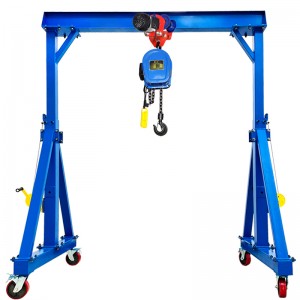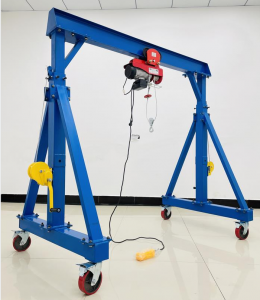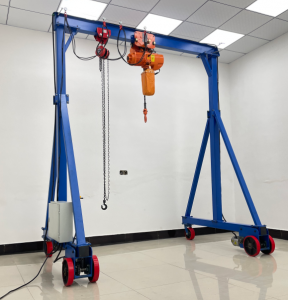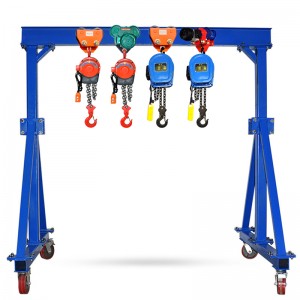Design and Components:
1, The main structural components are the horizontal beam or girder, the vertical legs or columns, and the wheeled or rail-mounted base.
2, The horizontal beam is where the trolley and hoist mechanism are mounted to lift and move loads.
3, The vertical legs can often be adjusted in height to accommodate different load heights.
4, The wheeled or rail-mounted base allows the entire crane structure to be repositioned as needed.
5, Many mobile gantry cranes use a modular design, allowing them to be assembled, disassembled, and reconfigured easily.
Lifting Mechanisms:
1, Most mobile gantry cranes use an electric powered overhead hoist, chain hoist, or winch to lift and move loads.
2, The trolley mechanism allows the hoist to travel back and forth along the horizontal beam.
3, Some models may have a bridge crane-style design with a trolley that can travel along the full span of the horizontal beam.
Applications:
1, Material handling in factories,
2, Loading/unloading of trucks, railcars, containers, and ships
3, Assembly and maintenance of large machinery and equipment
4, Construction site lifting and material movement
5, Shipyard operations
6, Aircraft maintenance and assembly
Advantages:
1, Mobility allows the crane to be positioned as needed around the work area
2, Height adjustability accommodates different load heights
3, Modular design enables easy installation, relocation, and reconfiguration
4, Relatively lower cost compared to fixed overhead cranes
5, Provide greater flexibility and adaptability than fixed cranes
Let me know if you need any clarification or have additional questions!
Post time: Aug-12-2024








